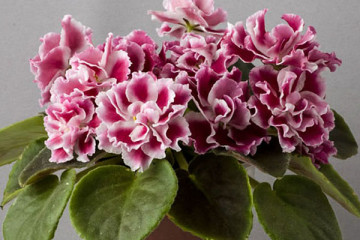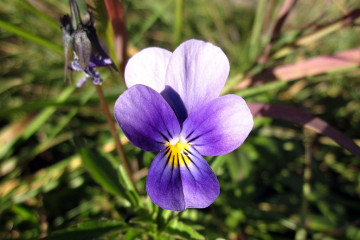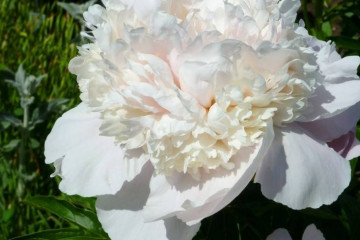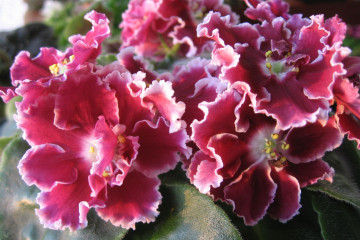Forest violet - description, varieties and characteristics of varieties
Content:
Violet is a beautiful and delicate flower that most often adorns flower beds in garden plots. The popularity of the plant is due to its long flowering. In addition, wild violets have medicinal properties. Growing a flower on your site, you can not only beautifully decorate it, but also get a natural and safe remedy that saves you from many diseases.
What species are forest violets
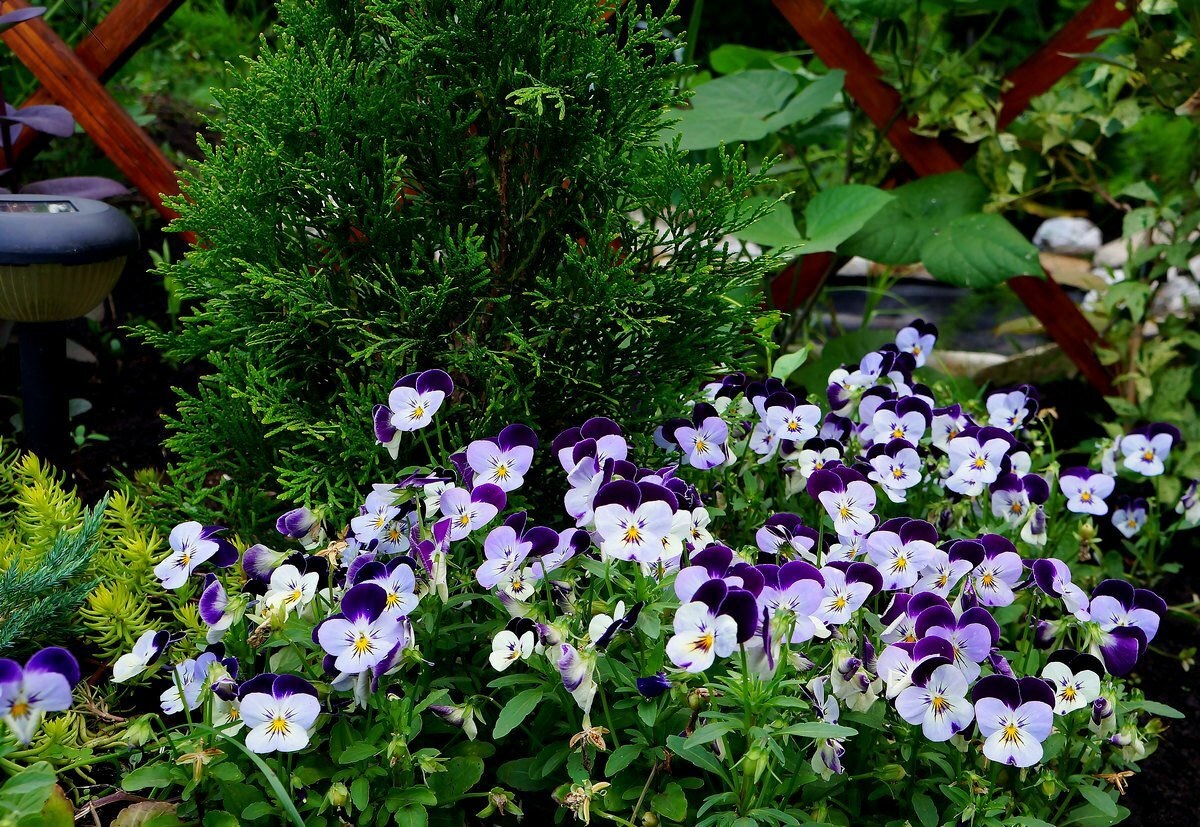
Forest viola is a wonderful plant used for landscaping
Wild violet is a plant belonging to the Violet family. Most often, the wild forest violet can be found in the north, in a harsh climate and low temperatures. Today, there are over 100 types of flowers. A perennial plant consists of shoots no more than 15 cm in height and 5 petals, which are formed on peduncles. Depending on the type of flower, it can be in different colors:
- purple;
- yellow;
- blue;
- white.
Various combination shades are also possible.
Briefly about the history of appearance
Forest violets originated in East Asia. It was from here that they began to spread to other regions. In horticulture, they began to be actively propagated since 1893.
Many species have been bred by breeders. The most popular of them are "Pansies", which can be found in different colors and sizes.
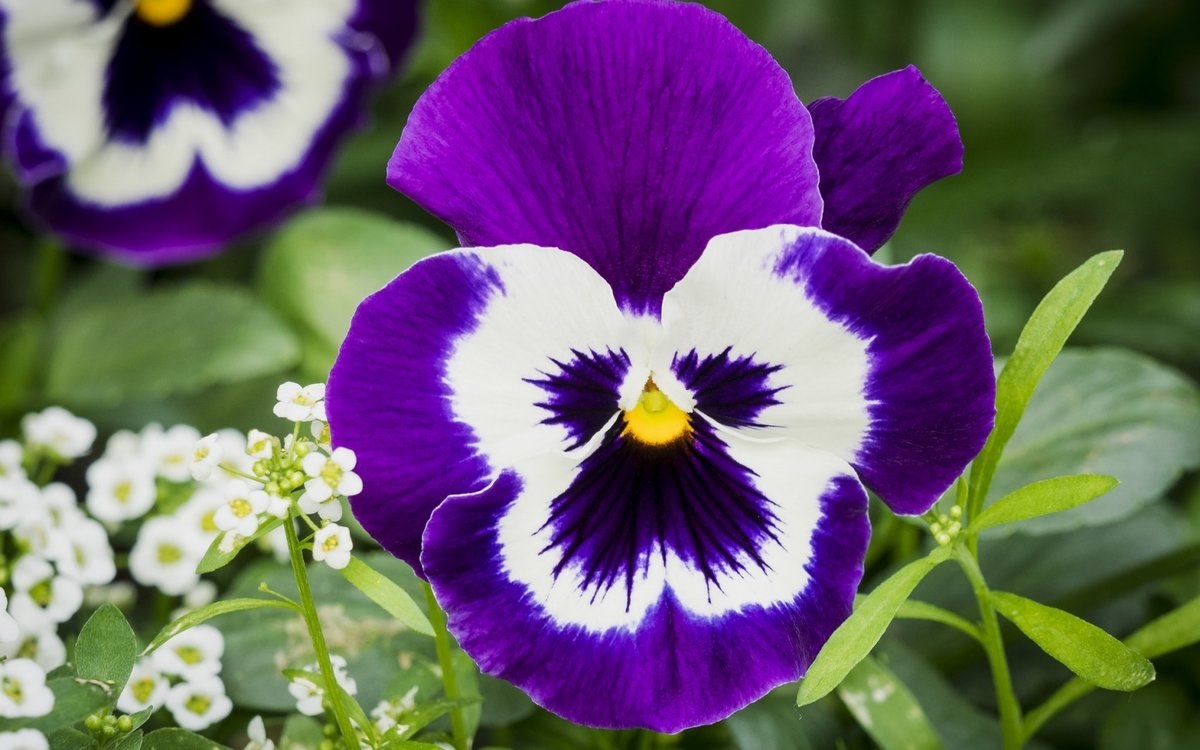
The most common type is "Pansies"
What is the difference from indoor
Field violet has nothing to do with home flowers, which are customary to see on window sills. They belong to different families and require different conditions for their growth. But they are similar in appearance.
Common varieties, names
In the natural conditions of Russia, you can find the following types of violets:
- "Pansies" or tricolor - this variety lives like a weed in the forest or in the fields. Flowering time starts in May and ends in September. The upper petals are blue and the lower ones are white.
- Marsh - blooms from May to August on moss-covered bumps in the forest, swamps, flooded meadows. The flowers are pale blue with dark veins.
- Viola arvensis or field white violet - blooms from April to September on open forest edges, roadsides.
- Canine - blooms in May, flowers are small in size, blue, grow in the field and at the edge of the forest.
- Altai - blooms twice a year, the first time from April to May, the second from September to October. Plants are purple and blue with a yellow center, found on mountain slopes.
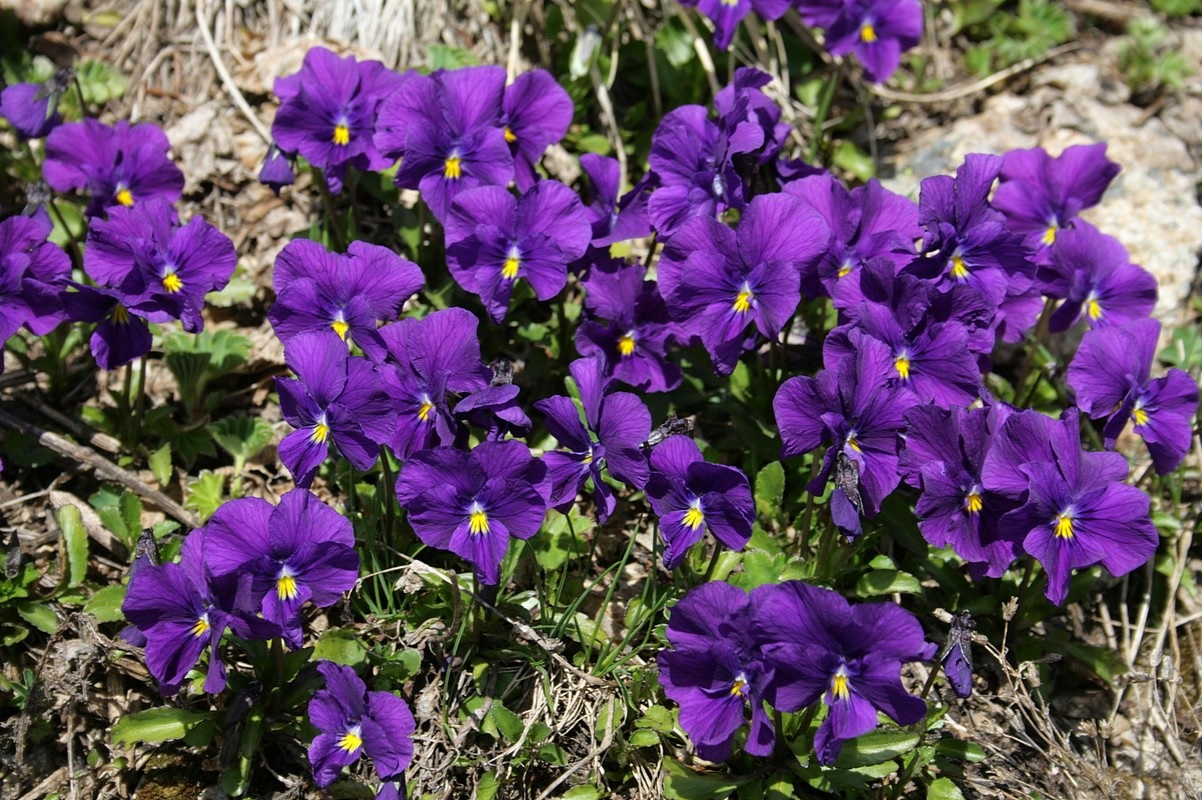
Viola Altai is characterized by the longest flowering
Features of this type
The growth of the wild violet has one characteristic. In nature, she tries to occupy as much area as possible. The same thing happens in the flower bed.
The forest violet will grow actively, so the shoots need to be pinched regularly to control the spread of the plant. When creating a beautiful landscape on a site, you can make a whole field of violets. They are used to form alpine slides.
If the forest viola is planted in the shade, then its inflorescences will be pale, but this will prolong the flowering time. Elevated areas are best suited for meadow violets so that moisture does not accumulate at the roots.
Recommendations for planting and caring for wild violets
Forest viols take root well in personal plots. But in order for them to grow well, you need to choose the right place for planting.
What kind of soil he likes, lighting, degree of moisture
The quality of the soil needed for violets may differ depending on the type of plant. There are varieties that need soil with a slightly acidic reaction, and some do well only in loose soil.
Landing in open ground
One of the easiest ways to grow a wildflower is to separate the rosettes from the flowers and plant them naturally. Active flowering begins as early as the next season.
Features of planting seedlings
Violets can be propagated both by sowing and seedlings. Finished bushes are planted at a distance of 20 cm from each other. The soil should contain leaves, sand, peat and humus.
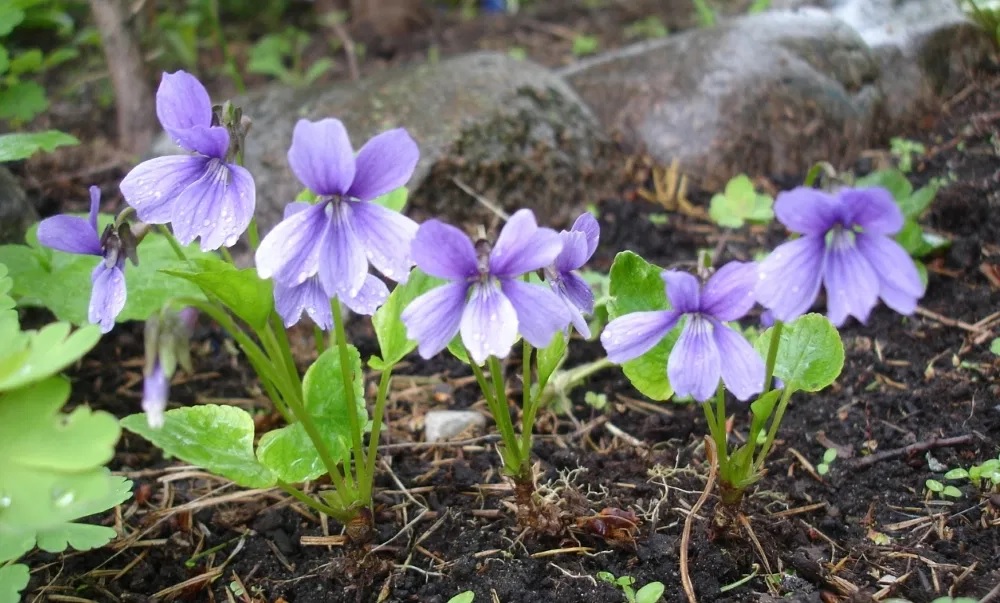
Planting a forest viola on a personal plot
Features of planting seeds
For reproduction of meadow violets with seeds, you need to scatter them over the ground, water and cover with foil.
Unpretentiousness
In order for the plant to sprout well and become viable, regular watering and airing is necessary. Once the sprout has hardened, no special care is required.
Violet tolerates winter well, it does not need to organize additional shelter for it. She is not afraid of the sun, but she needs to water more often.
Pest prevention
Prevention measures against parasite attacks include adherence to all necessary growing conditions. The leaves and flowers should be inspected regularly.
If the plant is attacked by nematodes or clover scoop, then the treatment should be carried out already at the initial stage of infection. At this point, you can still use folk methods. If there are a lot of insects, it will be possible to get rid of them only with the help of chemicals.
Can I plant indoors
White forest violet, like other species of wild flower, is very difficult to tolerate indoor conditions. They need a wide area to grow. In a small pot, the root system will rot. This will lead to death.
When and how it blooms
The flowering time and shape of plants depends on the species and conditions in which the plant is located.
During flowering, the main species of wild violets have flowers of five petals, two of which are located at the top and three at the bottom.
You can find varieties that look like cyclamen. These include the rare incision.
Some species, such as canine and scented viola, can bloom continuously throughout the summer. On average, wild violets bloom from May to September.
During flowering, the plant does not require intensive care. It is enough to carry out standard watering.
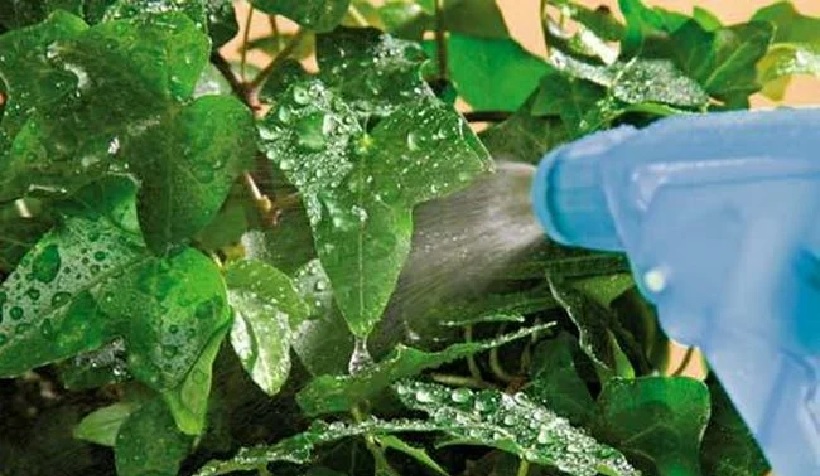
It is important to regularly inspect the plant for pests.
Breeding features of meadow violets
Experts recommend propagating meadow violets only by seeds, since seedlings and the separation of rosettes may not give a result.
The seeds can be planted outdoors or in seedling boxes.
The use of field violets in folk medicine
Wild viola is popular not only for its beautiful appearance, but also for its useful composition. It contains vitamins C and A, essential oils. The plant is actively used in folk medicine. It is used for:
- gargling;
- lowering the temperature;
- as an expectorant, diuretic and pain reliever.
The forest plant has also found its application in cosmetology. It is used to smooth wrinkles, heal cracks.
Forest viola is an excellent plant for decorating a site, decorating alpine slides. Correct application will help to use it not only for decorative, but also for medicinal purposes.
